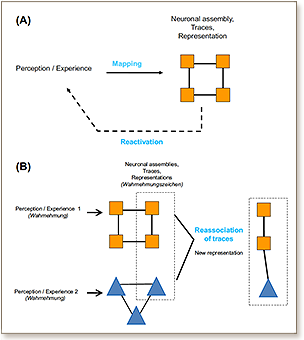
Memory traces can become labile when retrieved. This has intrigued not only neuroscientists, psychologists, and cognitive scientists but also clinicians who work with memories to treat psychopathologies, such as psychotherapists and psychoanalysts. Psychotherapists and psychoanalysts question whether the treatments based on re-evoking memories engage reconsolidation and how treatments may work and be effective with reconsolidation processes. However, reconsolidation may not easily occur in older or very strong, consolidated memories, which are, in fact, those deeply rooted in most maladaptive behaviors, and most animal reconsolidation studies have been done on memories that are only days old. Hence, the questions deepen into many more complex layers, asking the following: How are memories formed and retrieved and in part become unconscious? How does retrieval in a therapeutic setting change those traces? Here, we propose some hypotheses based on neuroscientific knowledge to begin explaining the bases of Freudian unconscious and speculate on how memory traces and Freudian unconscious intersect. © 2013 Elsevier Inc. All rights reserved.